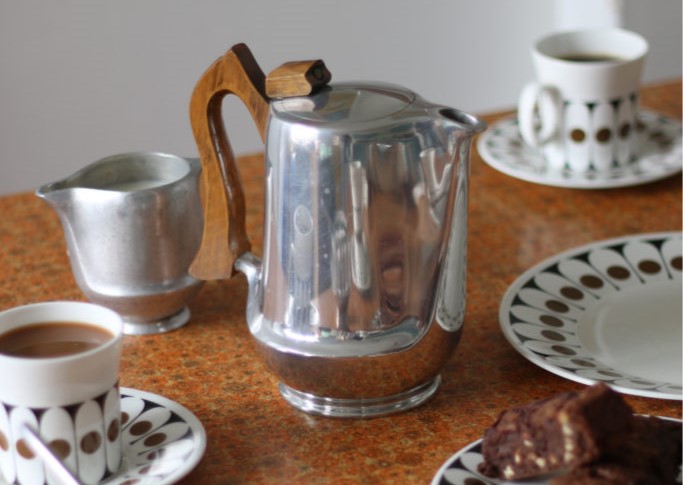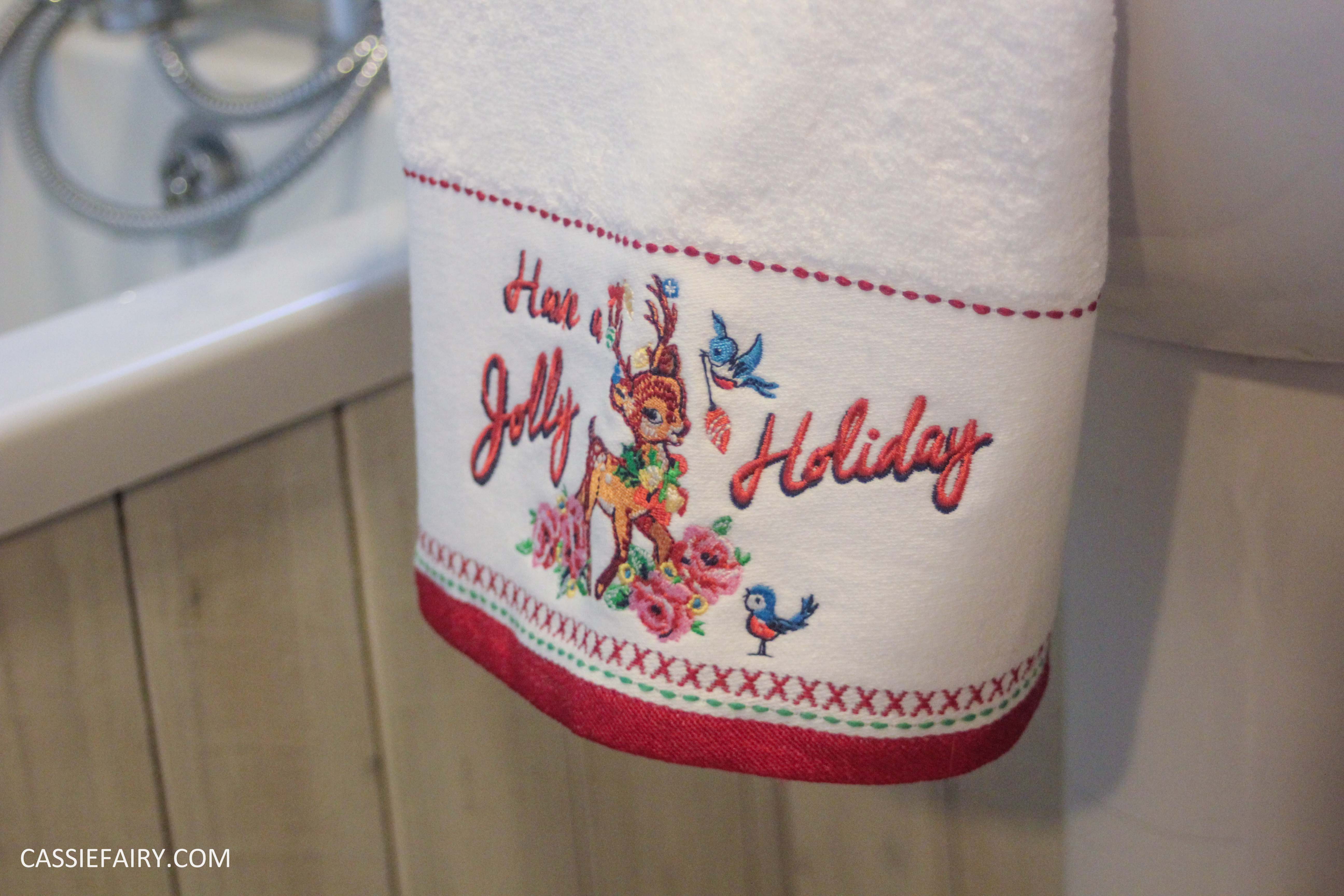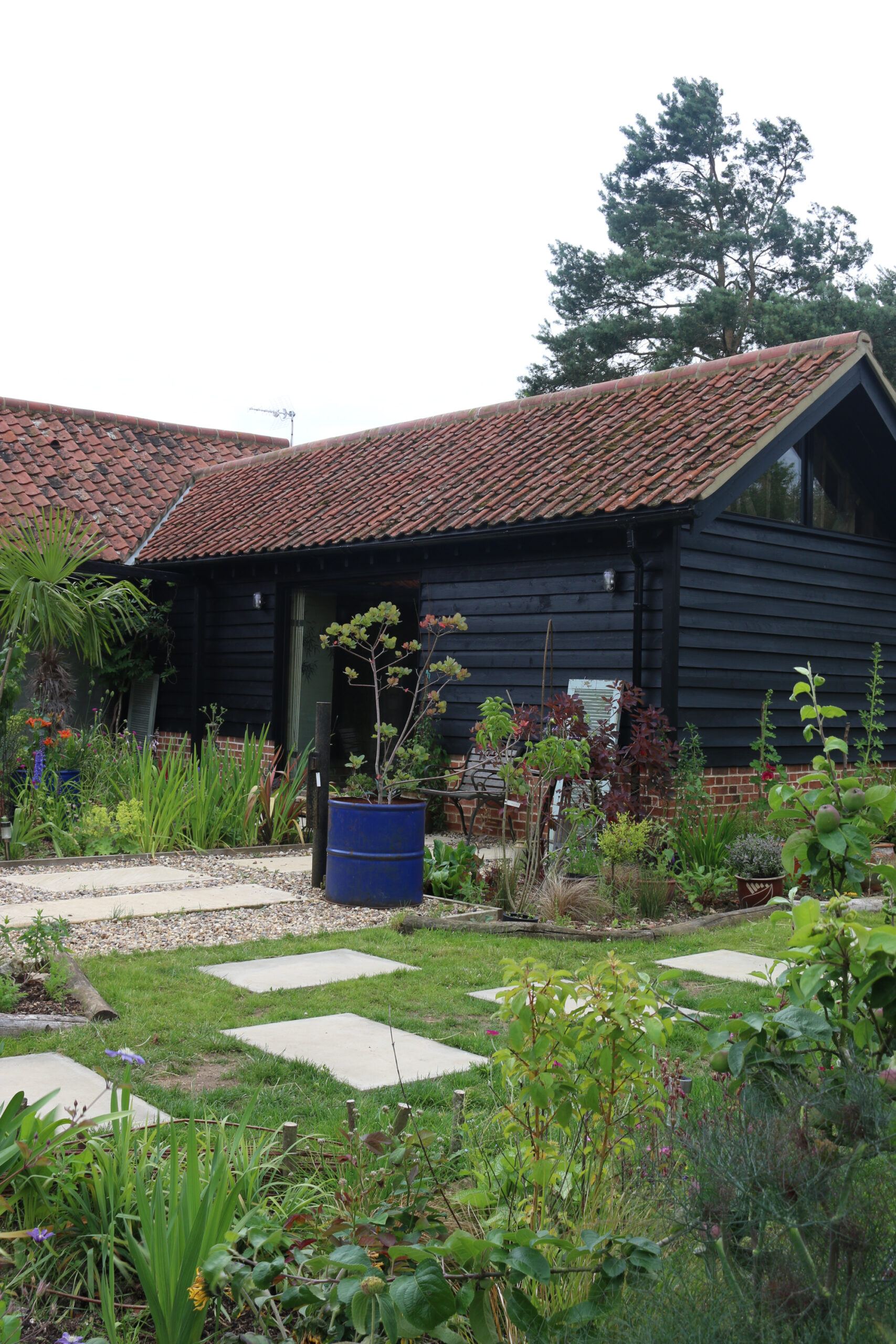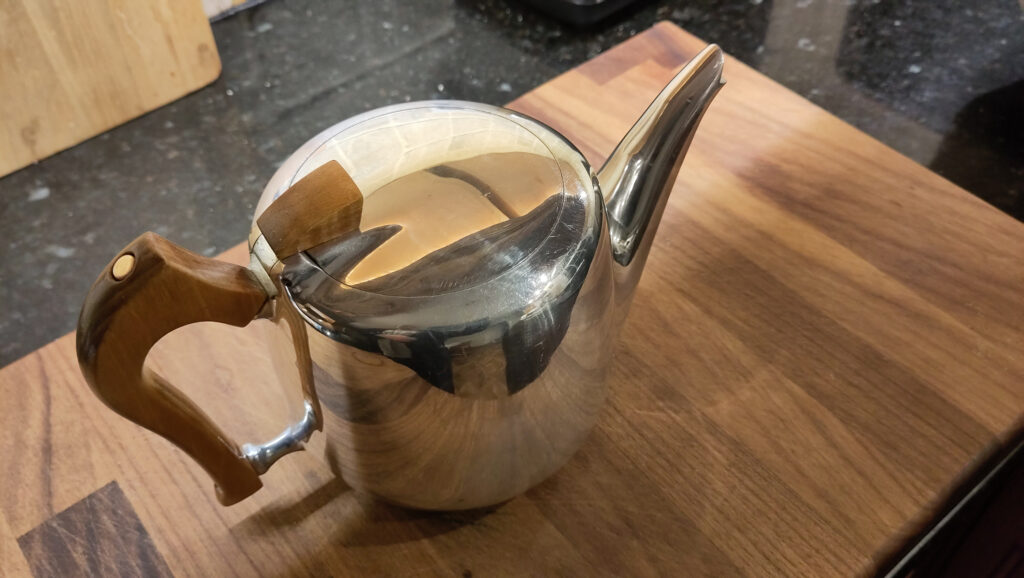
I was lucky enough to find some Picquot Ware at a carboot sale many years ago and writing about it was one of the earliest posts on my blog: 1950s Picquot Ware and my tips for polishing metal.
Since then, quite a community of Picquot Ware fans have appeared in the comments of that post and a few readers have sent my photos of their own Picquot Ware collections, including the original instructions and guarantee and their coffee percolator.
If you’re wondering ‘what is the history of Picquot Ware?’ the company information, collection numbers and cleaning advice can be found within those blog posts and in the comments sections, too.
Today, I’m sharing the photos I received from Toolbox Tim – who had photographed the steps they took to refurbish the handles and metalwork of their own teapot. How can you refurbish your Picquot Ware yourself? Here’s what Tim said:
“I couldn’t work out how to sand down the wood handles effectively without removing them like the other people had. So, I superglued the end of an old chopstick to the metal caps (being careful not to glue it in!) Let it set then carefully pulled them out. This is what they look like… Copper I think. Then scraped off the glue and polished them clean on a leather strop.”
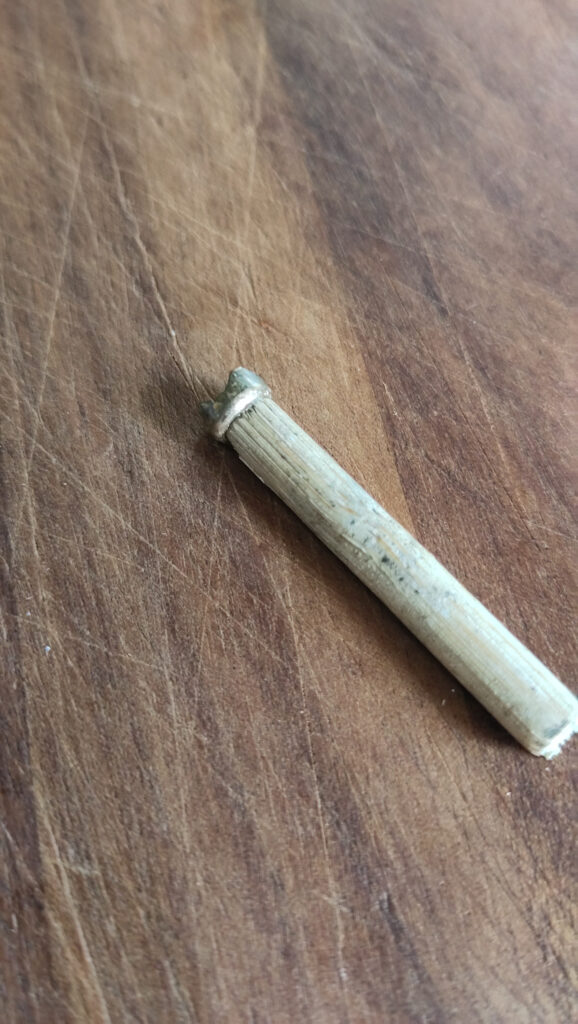
“A photo of what the components look like disassembled and sanded.”
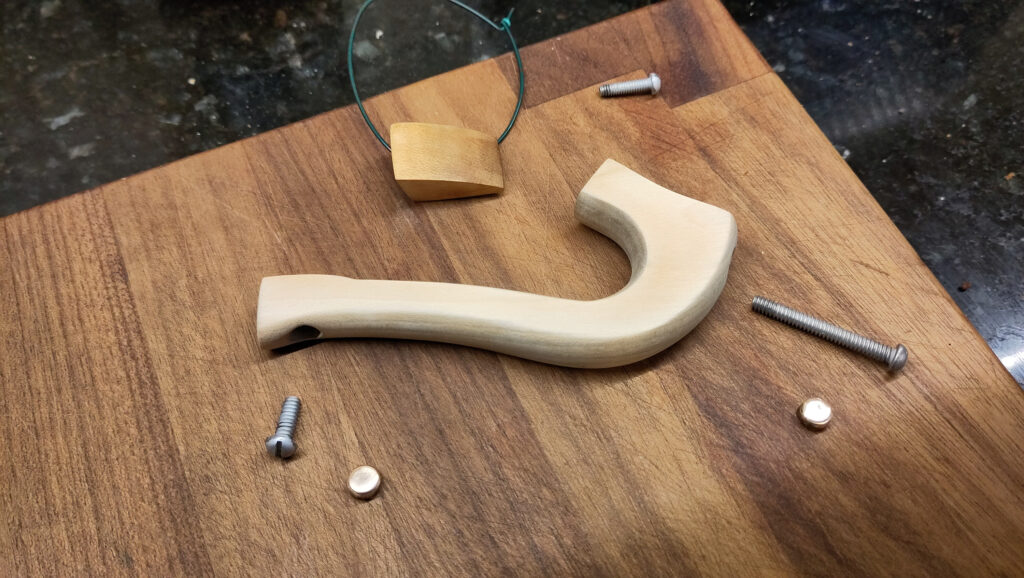
What sort of oil should be used for Piquot Ware handles? Tim says: “I used Danish oil instead of varnish as I thought it would be less susceptible to cracking and easier to re do without dismantling again. Hung on garden wire to paint and set.”
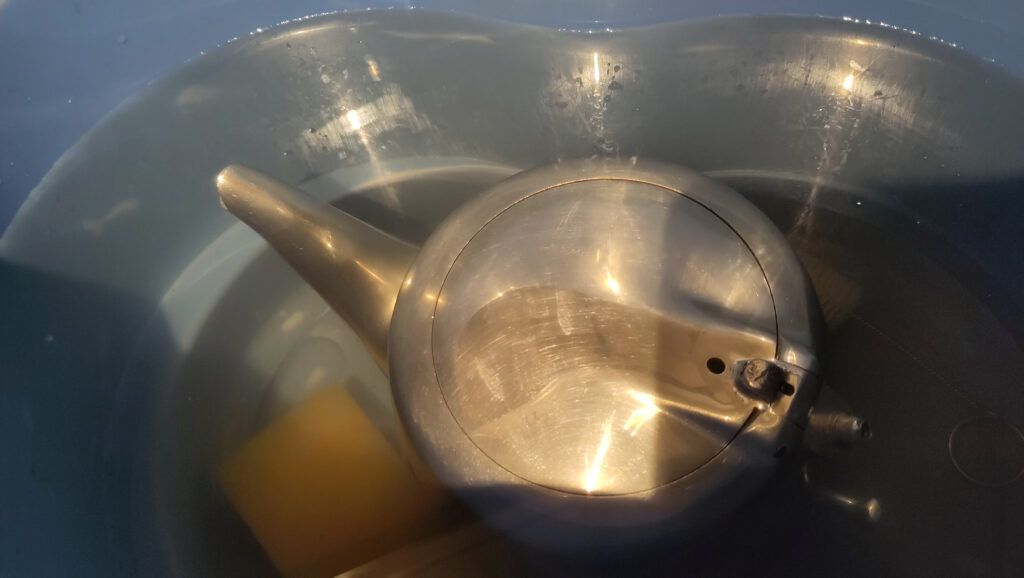
But, how do you clean inside a Picquot Ware tea port? Tim tried something different: “The pot itself steeping in a bucket of coffee machine descaler (this is citric acid+tartaric acid powder basically) and maybe you can see the colour of the water coming out. A quick wipe with a washing up scourer and everything came clean inside and out.”
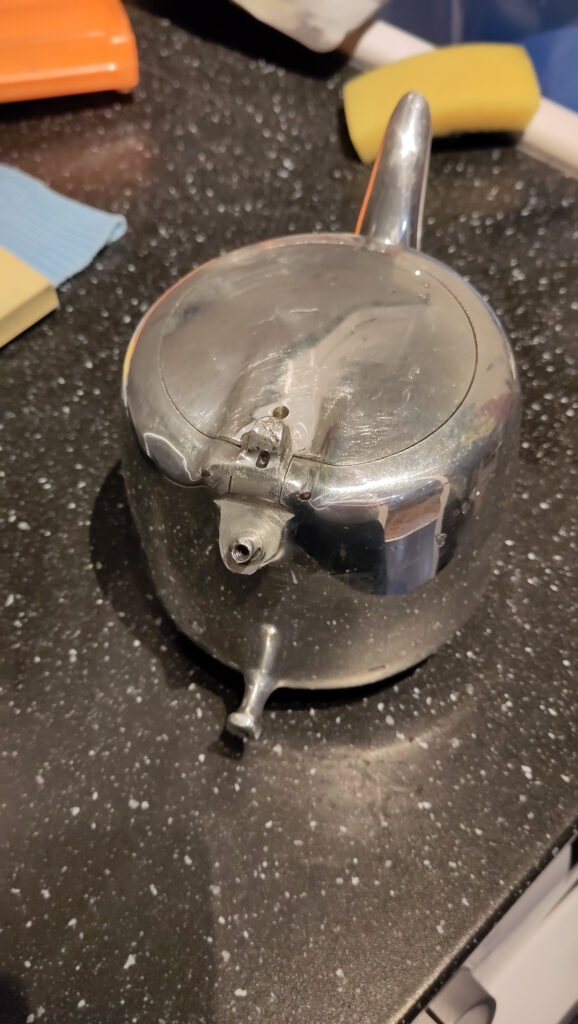
“Pot without any wood attached.”

“Final product!”
I think we can all agree that the teapot looks fantastic after Toolbox Tim’s makeover efforts – that handle looks so smooth! I’d be very happy to have a teapot like this in my Picquot Ware collection.
Thanks so much for sharing your photos of the step-by-step process Tim, so helpful!
Looking for more cleaning hacks for Picquot Ware? I’ve previously shared a photo of Peter’s gleaming tea set along with the original price list and more tips for cleaning the inside and refinishing the handles so be sure to check out that blog post too.
Want to know more about the history of Picquot Ware? You can find the useful Picquot Ware blog posts here and discover how to clean them and see the original instructions.
Best of luck with your own Picquot Ware collection!
